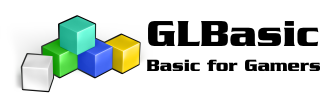Hello,
Thanks for all your advices!
About my game:
It has no scrolling, but there can be many sprites moving on the screen, up to 30 sprites.
The game is optimized for 60 FPS.
The sprites are seperate PNG images that I load with LOADSPRITE or LOADANIM. The background of a level is one big PNG image.
If I use the Z Project and optimize the graphics (background images and sprites) for 1920 x 1080, will there be performance issues on slow Android smart phones with only one CPU core?
I read that the Z Project uses faster strech methods than when scaling the whole virtual screen.
But would it be fast enough?
Best wishes,
Miroslav
Thanks for all your advices!
About my game:
It has no scrolling, but there can be many sprites moving on the screen, up to 30 sprites.
The game is optimized for 60 FPS.
The sprites are seperate PNG images that I load with LOADSPRITE or LOADANIM. The background of a level is one big PNG image.
If I use the Z Project and optimize the graphics (background images and sprites) for 1920 x 1080, will there be performance issues on slow Android smart phones with only one CPU core?
I read that the Z Project uses faster strech methods than when scaling the whole virtual screen.
But would it be fast enough?
Best wishes,
Miroslav



